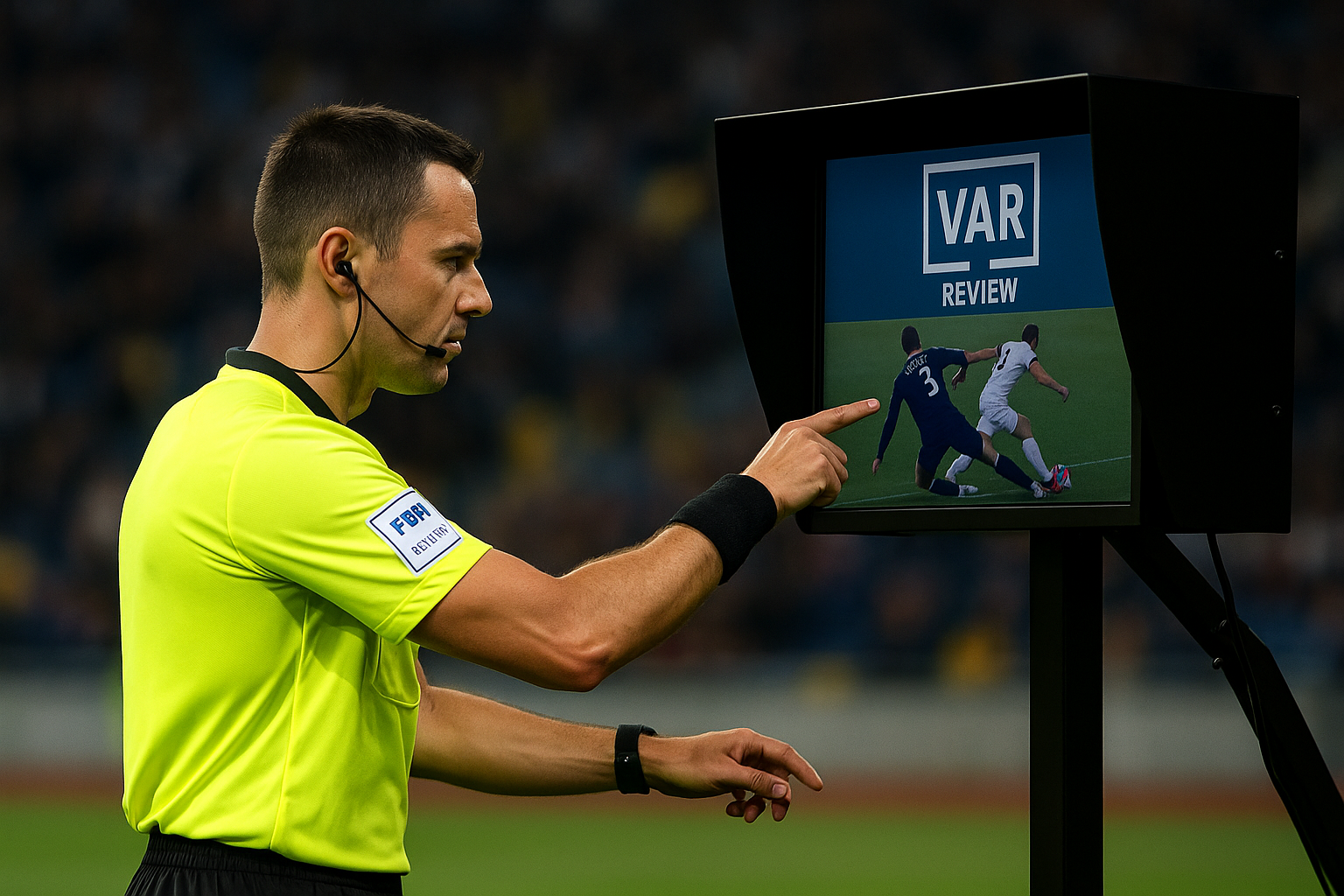How VAR Technology Works in Football

How VAR Technology Works in Football, Football has always been a game of passion, skill, and split-second decisions. But as the sport has grown in popularity and financial value, the need for accurate refereeing decisions has become more critical. This is where Video Assistant Referee (VAR) technology comes in.
Introduced officially in 2018, VAR has transformed how referees make decisions in football. But how exactly does it work, and why has it become such a key part of the modern game? Let’s break it down step by step.
1. What is VAR in Football?
VAR (Video Assistant Referee) is a system that uses video technology and a team of assistant referees to help the on-field referee review key decisions.
It is not used for every call but specifically for “clear and obvious errors” in four critical areas:
-
Goals – checking for offsides, fouls, or handballs.
-
Penalty decisions – ensuring correct awarding or overturning.
-
Direct red card incidents – serious foul play or violent conduct.
-
Mistaken identity – correcting cases where the wrong player was penalized.
2. How Does VAR Work in Real Time?
Step 1: Incident Occurs
During the match, when a controversial or unclear incident occurs, the on-field referee either:
-
Requests a VAR review, or
-
The VAR team suggests a review if they spot a possible mistake.
Step 2: Video Check
VAR officials, located in a dedicated video operation room, review multiple camera angles in real time. They use slow-motion replays, zoomed shots, and tracking tools to assess the situation.
Step 3: Communication with Referee
The VAR team communicates findings through a headset to the on-field referee.
Step 4: On-Field Review (OFR)
For some decisions, the referee jogs to the pitch-side monitor to personally review footage before making the final call.
Step 5: Final Decision
The on-field referee has the final authority, even after reviewing VAR advice. The decision is then signaled to players and spectators.
3. The Technology Behind VAR
Multi-Camera Setup
VAR uses dozens of cameras, including super slow-motion and ultra-high-definition cameras, positioned around the stadium.
Goal-Line Technology Integration
Often combined with goal-line sensors, VAR ensures accurate detection of whether the ball has crossed the line.
3D Offside Lines
To check offsides, VAR systems use 3D tracking technology, mapping players’ positions and drawing calibrated lines to determine infractions with precision.
Communication Systems
Referees and VAR officials are linked through encrypted radio headsets, ensuring secure and instant communication.
4. Benefits of VAR
-
Fairness: Reduces major refereeing errors.
-
Transparency: Fans see reviews broadcast on screens.
-
Confidence: Referees have technological support for tough decisions.
-
Integrity: Protects the credibility of football competitions.
5. Criticisms of VAR
While VAR has many benefits, it also faces criticism:
-
Delays: Stoppages for reviews can slow down the game.
-
Subjectivity: Even with video, some decisions remain open to interpretation.
-
Fan Experience: Celebrations can be interrupted by offside reviews.
However, football authorities continue refining VAR to minimize these issues.
6. VAR in Major Competitions
-
FIFA World Cup 2018 – VAR’s first use in a major international tournament.
-
UEFA Champions League – Introduced in 2019 to ensure fair play in Europe’s top competition.
-
Domestic Leagues – Now used in the Premier League, La Liga, Serie A, Bundesliga, and beyond.
7. The Future of VAR
Looking ahead, VAR is likely to become even more advanced, with AI-driven analysis, automated offsides, and better communication tools for fans inside stadiums.
As football continues to modernize, VAR will remain at the center of debates — but it has undeniably changed the game for the better.
Conclusion
VAR technology has revolutionized football by bringing greater accuracy, fairness, and transparency to refereeing decisions. While not perfect, it is a powerful tool that combines human judgment and modern technology to protect the integrity of the sport.
For beginners and fans alike, understanding how VAR works helps appreciate the complexity of officiating in the modern football era.

Comments are closed, but trackbacks and pingbacks are open.